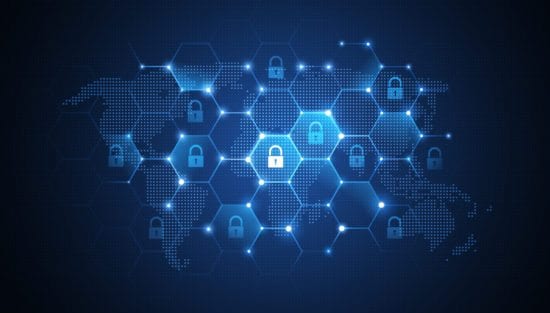“The next generation of wireless technology is here. 5G will enhance connectivity across all platforms, providing more efficient, higher bandwidth connections which opens doors for new classes of devices or applications that primarily run across cellular networks. It is predicted that by 2024 more than 1.5 billion devices will be connected to 5G.
The emergence and subsequent roll-out of 5G is bringing a complex blend of challenge and opportunity to organisations across all vertical sectors today. 5G will be a strong enabler in the expansion of the Internet of Things (IoT), given the speed and versatility it will bring to networks. 5G has a range of benefits when compared to 4G, based on its use of the 30 GHz to 300 GHz spectrum:
- Higher speeds: 5G peak speeds, at up to 10 Gigabits/s, will potentially be ten times the speed of 4G.
- Lower latency: 5G offers latency below 1ms, compared to a typical 4G performance of 10-50ms. 2
- Greater capacity: 5G networks will have capacity for a larger number of connected devices, by some estimates as much as one million devices per square kilometre.
The low latency and high speed of 5G particularly suit applications such as consumer VR/AR, AI, and autonomous vehicles, with high data density and rapid response requirements, enabling faster adoption of these technologies.
The roll-out of 5G will, however, also entail some major changes to be made to existing IT infrastructures. As IoT grows and expands, it is precipitating the move of compute locations away from traditional data centres increasingly to the edge and the desire to process and prioritise data closer to the collection point.
Moving to the Edge
In line with this, the advent of 5G is forcing carriers to make major investments in their edge infrastructure (remote offices, POPs, cell towers) to be able to handle the additional data traffic it will generate. Traditional telecoms equipment cannot cope with the data volumes, so carriers are borrowing from IT and redesigning edge “telco” infrastructure using the same data centre technologies we have already seen implemented by internet service providers and businesses more generally.
This move to the edge brings challenges. Users expect the same level of uptime and response from their network, regardless of where that compute is located. But the reality of edge locations is that the type of system redundancy and staffing that is typical at data centres is not feasible at each remote location. Having a super-fast network is important but ensuring that it is also very secure and highly resilient is equally so.
That is not always easy to achieve in world where businesses are faced by constant cyber-security threats. Cyber-criminals are getting more sophisticated every day. Whether they are hacking into systems, disrupting networks or bringing them down, their ongoing threat will be top of mind for many CEOs today. And their activities are a real cause of network outages and a threat to network uptime.
Finding a Solution
In this context, reliable, always-on access to the network devices, via a technology known as out-of-band (OOB) management, is a critical component to ensure network resilience. As levels of automation continue to increase, enterprises will also have to extend the reach of their management and monitoring tools to accommodate the increase in edge compute locations. As 5G fuels our appetite for more and more mission critical data, the mean-time to repair or remediate any remote network outages will inevitably become ever more important, as will the security of the network. 5G will undoubtedly allow super-fast data transit to an ever-increasing number and classes of devices, but to enable this, many remote locations that don’t necessarily allow for easy access will need to be used.
Cell sites (or towers) will need to be made more physically secure as they will soon form part of critical infrastructure that allows smart cities and driverless cars to operate safely and reliably. Better device verification and data encryption will become absolutely essential to ensure that IoT devices can be properly secured and that they don’t become a weak point or provide a vulnerability to be exploited. 5G networks themselves are being designed to allow a level of self-healing through a combination of critical equipment redundancy, AI tools and cell coverage overlap.
5G is an evolving technology that is still in its infancy. It promises to revolutionise our everyday lives and like any major revolution, it brings both great opportunity as well as some risk. To make the most of it, organisations will need to take advantage of the former while also doing their utmost to mitigate the latter.”
The opinions expressed in this post belongs to the individual contributors and do not necessarily reflect the views of Information Security Buzz.



